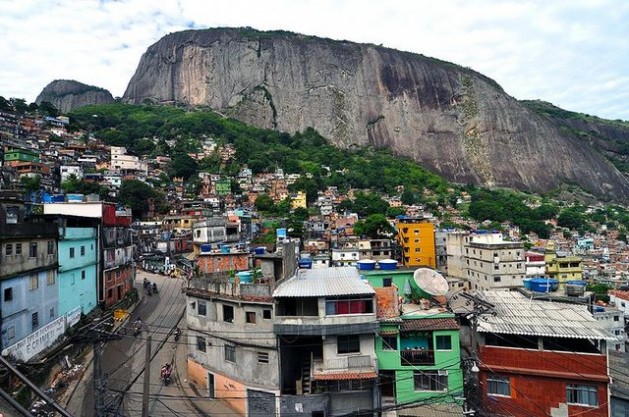Latin America
Related: About this forumCash Transfers Drive Human Development in Brazil
Cash Transfers Drive Human Development in Brazil
By Fabiola Ortiz

The Morro de Vidigal favela in Río de Janeiro. Credit: Agência Brasil/EBC
RIO DE JANEIRO, Jul 31 2014 (IPS) - Every day, Celina Maria de Souza rises before dawn, and after taking four of her children to the nearby school she climbs down the 180 steps that separate her home on a steep hill from the flat part of this Brazilian city, to go to her job as a domestic. In the evening she makes the long trek back up.
For 25 years, Souza has lived at the top of the Morro Vidigal favela or shantytown, located in the middle of one of the wealthiest neighbourhoods in Rio de Janeiro.
In this favela, home to some 10,000 people, the houses, many built by the families themselves, are squashed between the sea and a mountain.
Originally from Ubaitaba, a town in the northeast state of Bahia1,000 km north of Rio de Janeiro, Souza, 44, left her family when she was just 17 to follow her dream of a better life in the big city.
More:
http://www.ipsnews.net/2014/07/cash-transfers-drive-human-development-in-brazil/
Judi Lynn
(160,586 posts)Here's a helpful map which can show you the level of development of each country. Interesting.
International Human Development Indicators
http://hdr.undp.org/en/countries
Human Development Index (HDI)
The HDI was created to emphasize that people and their capabilities should be the ultimate criteria for assessing the development of a country, not economic growth alone. The HDI can also be used to question national policy choices, asking how two countries with the same level of GNI per capita can end up with different human development outcomes. These contrasts can stimulate debate about government policy priorities.
The Human Development Index (HDI) is a summary measure of average achievement in key dimensions of human development: a long and healthy life, being knowledgeable and have a decent standard of living. The HDI is the geometric mean of normalized indices for each of the three dimensions.
The health dimension is assessed by life expectancy at birth component of the HDI is calculated using a minimum value of 20 years and maximum value of 85 years. The education component of the HDI is measured by mean of years of schooling for adults aged 25 years and expected years of schooling for children of school entering age. Mean years of schooling is estimated by UNESCO Institute for Statistics based on educational attainment data from censuses and surveys available in its database. Expected years of schooling estimates are based on enrolment by age at all levels of education. This indicator is produced by UNESCO Institute for Statistics. Expected years of schooling is capped at 18 years. The indicators are normalized using a minimum value of zero and maximum aspirational values of 15 and 18 years respectively. The two indices are combined into an education index using arithmetic mean.
The standard of living dimension is measured by gross national income per capita. The goalpost for minimum income is $100 (PPP) and the maximum is $75,000 (PPP). The minimum value for GNI per capita, set at $100, is justified by the considerable amount of unmeasured subsistence and nonmarket production in economies close to the minimum that is not captured in the official data. The HDI uses the logarithm of income, to reflect the diminishing importance of income with increasing GNI. The scores for the three HDI dimension indices are then aggregated into a composite index using geometric mean. Refer to Technical notes for more details.
More:
http://hdr.undp.org/en/content/human-development-index-hdi